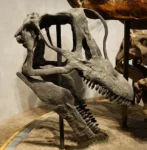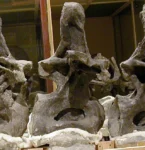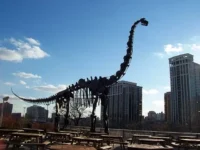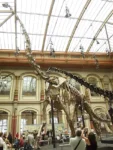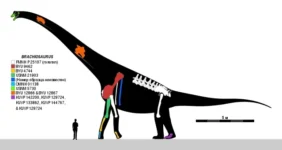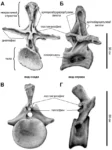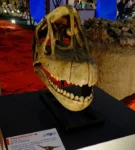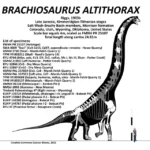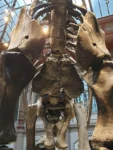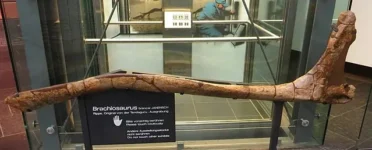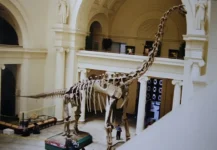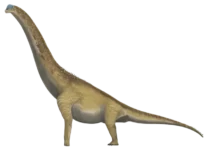Brachiosaurus
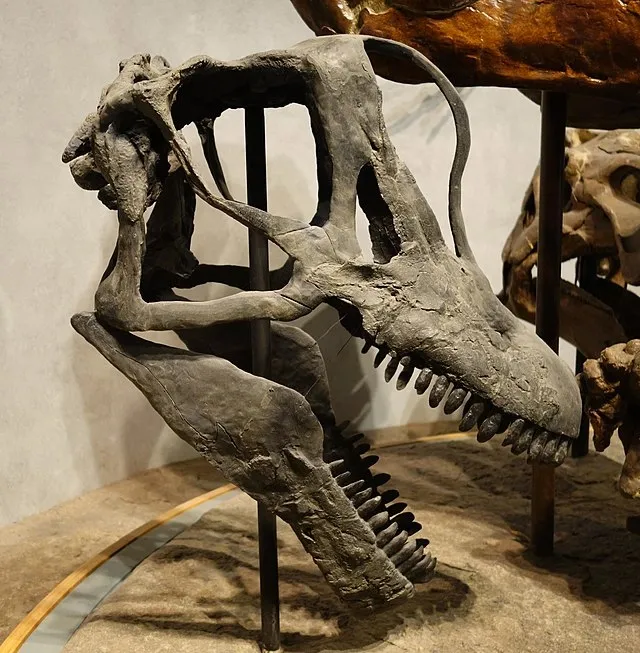
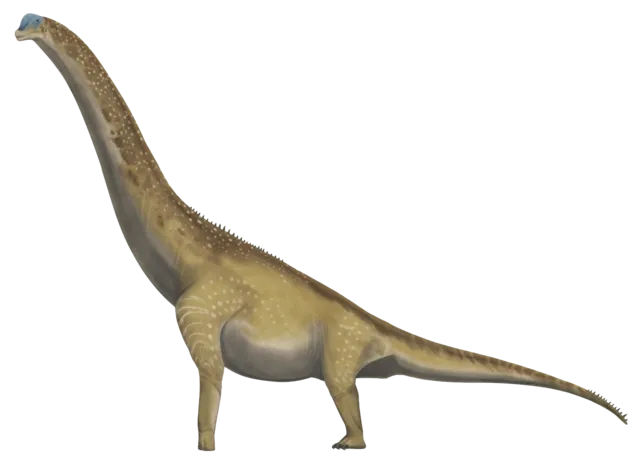
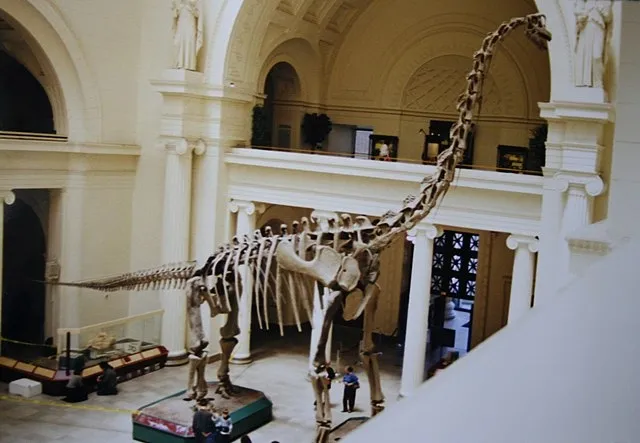
BRACHIOSAURUS
Brachiosaurus is a genus of sauropod dinosaur that lived during the late Jurassic period, approximately 154 to 153 million years ago. Brachiosaurus is significant because of its size, unique body proportions, and the valuable insights it provides into the anatomy and behavior of sauropod dinosaurs. It is one of the best-known and most recognizable dinosaurs in popular culture. Here are some key details about Brachiosaurus:
SIZE AND ANATOMY:
- Size: Brachiosaurus was one of the largest land animals known to have existed. Adults reached lengths of about 75 to 85 feet (23 to 26 meters) and stood around 30 to 40 feet (9 to 12 meters) tall at the head.
- Weight: It weighed around 30 to 60 tons, though some estimates suggest larger individuals could have weighed even more.
- Body Structure: Brachiosaurus had a long neck, a relatively short tail compared to other sauropods, a large body, and a distinctive posture with its front legs longer than its hind legs. This gave it a sloping appearance, with the shoulders higher than the hips.
- Diet: Brachiosaurus was an herbivore, feeding on vegetation such as ferns, cycads, conifers, and other plants. Its teeth were adapted for stripping leaves and needles from branches.
- Unique Features: Its long neck allowed Brachiosaurus to browse vegetation high above the ground, reaching heights that other sauropods could not.
BEHAVIOR AND ECOLOGY
- Feeding Behavior: Brachiosaurus likely spent much of its time browsing tall trees and plants in conifer forests and floodplain environments. Its long neck and unique body proportions made it well-suited for feeding at high levels.
- Social Behavior: Fossil evidence suggests that Brachiosaurus may have lived in small groups or herds, which could have provided protection from predators and facilitated social interactions.
- Habitat: It inhabited what is now western North America, particularly in regions that were semi-arid with seasonal rivers and lush vegetation during the late Jurassic period.
FOSSILS AND DISCOVERY:
- First Discovery: The first Brachiosaurus fossils were discovered in 1900 by Elmer Riggs in Colorado, USA. Subsequent discoveries in other parts of North America have provided more complete skeletons and detailed insights into its anatomy.
- Significant Finds: Several well-preserved skeletons and partial remains of Brachiosaurus have been found, including the famous Giraffatitan specimen from Tanzania, which was initially thought to be Brachiosaurus.
CLASSIFICATION
- Order: Saurischia
- Suborder: Sauropodomorpha
- Family: Brachiosauridae
- Genus: Brachiosaurus
- Species: The type species is Brachiosaurus altithorax.
FUN FACTS:
- High Reach: Brachiosaurus is known for its long neck, which allowed it to browse vegetation as high as 30 feet (9 meters) above the ground. Its front legs were longer than its hind legs, giving it a unique posture among sauropods.
- Name Meaning: The name Brachiosaurus means “arm lizard,” derived from Greek words referring to its long front limbs compared to its hind limbs.
- Size Variation: Like other dinosaurs, there was likely some size variation among individuals of Brachiosaurus, with some specimens being larger or smaller than others. Factors such as age, sex, and environmental conditions may have influenced this variation.
- Global Distribution: Fossils of Brachiosaurus have been found in North America, Africa, and possibly Europe, suggesting a wide geographical range during the late Jurassic period.
